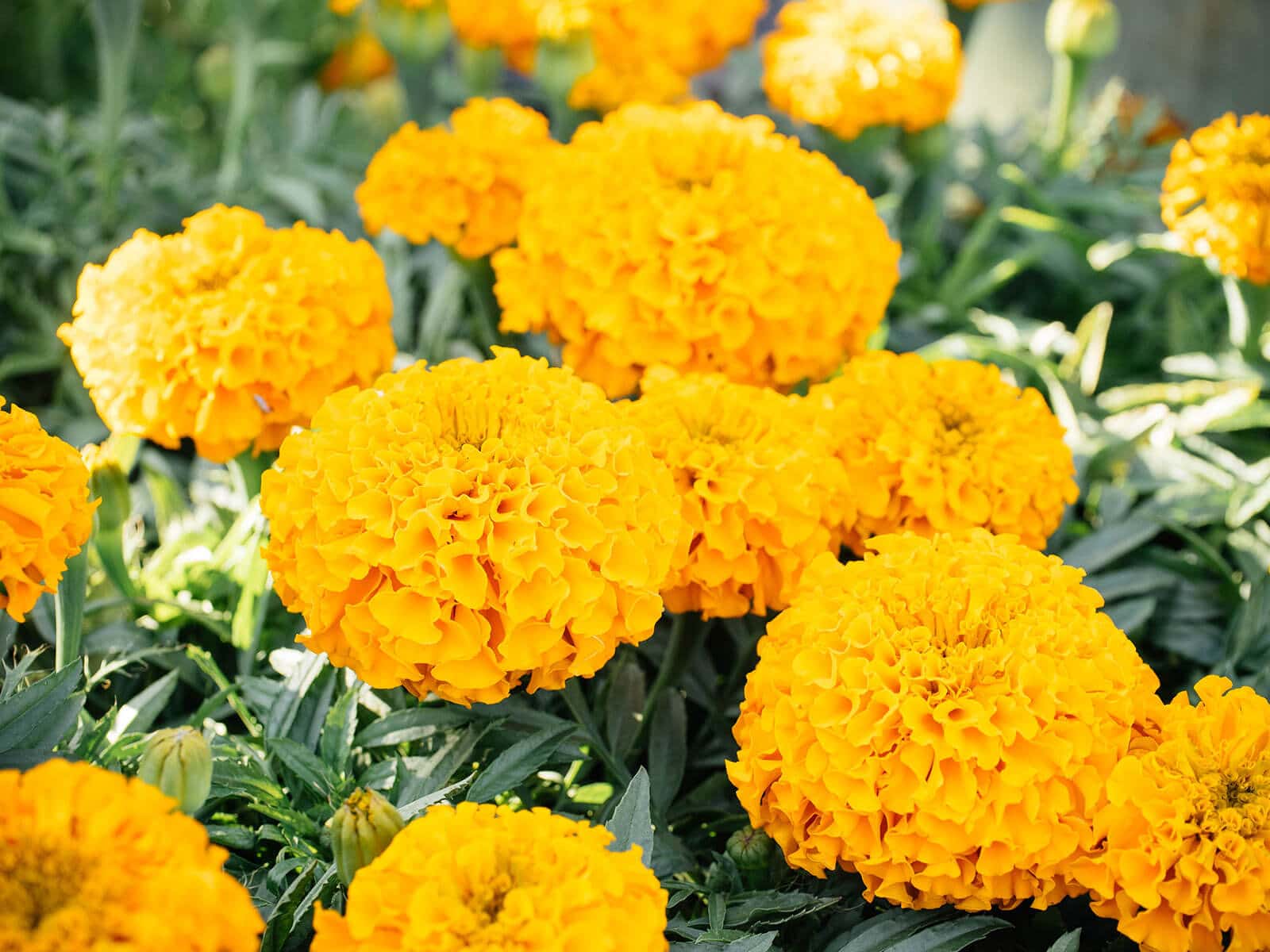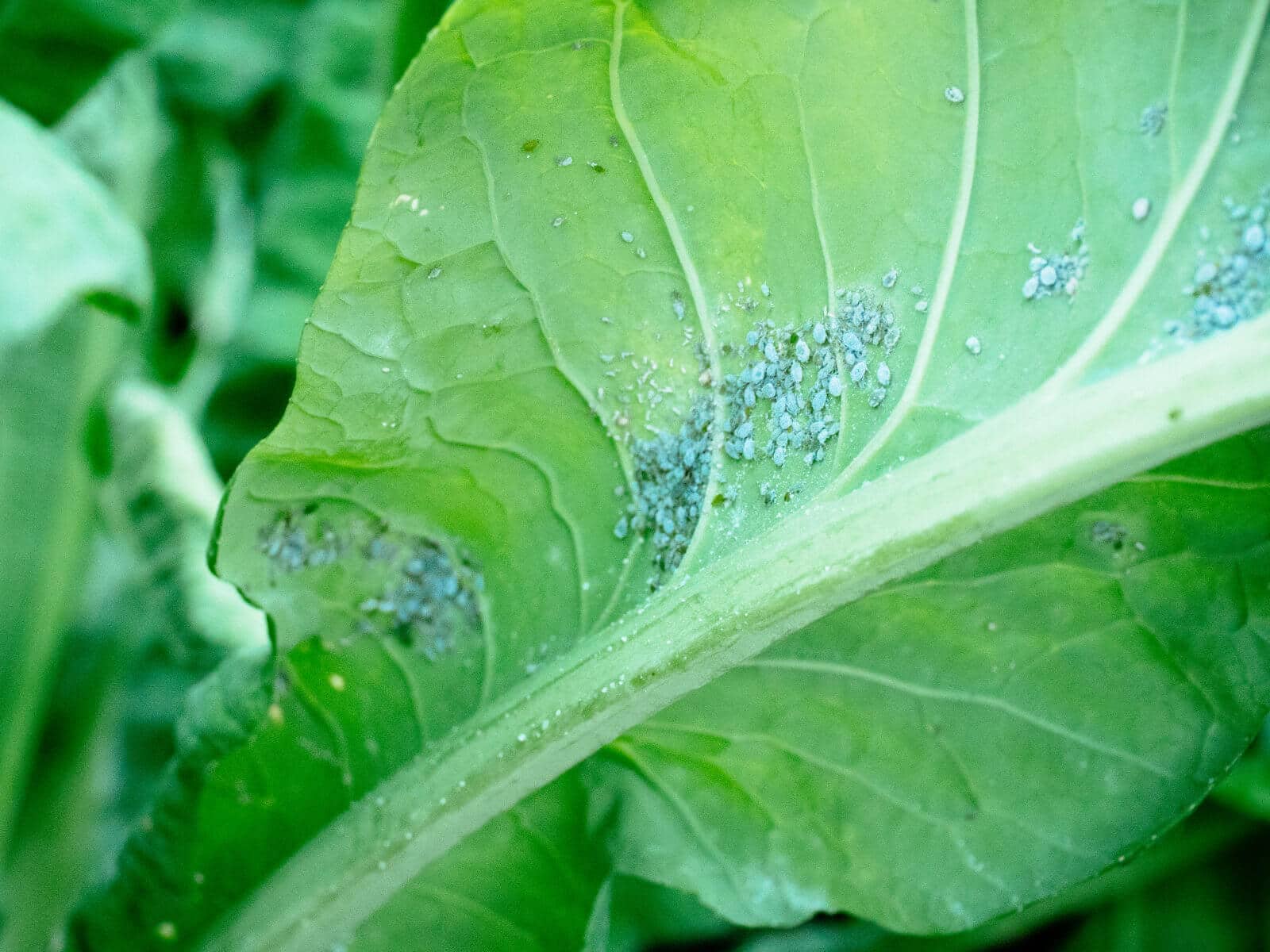Of all the pests that plague gardens throughout the season, aphids are among the most destructive, overwhelming, and frustrating.
Also known as plant lice, garden lice, or greenflies, they seem to multiply overnight and can quickly invade a garden, leaving you with sticky, stunted plants that struggle to survive.
Not ones to be particularly picky, aphids are voracious feeders and descend on both indoor and outdoor plants, including ornamentals and edibles.
Though we tend to view them in a negative light, we should really be thinking of aphids as nature’s indicator that something is out of balance. Aphids aren’t necessarily “bad” bugs—they tell you when something bad is going on in the garden.
Aphids usually show up on plants that are under some sort of stress—perhaps from drought or heat stress, or overwatering, or over-fertilizing.
Luckily, aphids are one of the easier pests to manage if you catch them early, before their colonies grow too large.
Well, under optimal environmental conditions without any predators, parasites, or diseases, a female aphid hatched in spring can theoretically produce up to 600 billion descendants, or up to 41 generations of females in a single season!
So it’s important to tackle the problem early, or prevent plant lice from happening in the first place. And to do that, you first have to know what you’re looking at.
The Amazon Elephant Ear plant, with its huge heart-shaped green leaves, adds a tropical flair to any garden. However these statement plants can fall victim to infestations of pesky aphids that distort growth and damage foliage. Getting rid of aphids on Amazon Elephant Ear plants quickly and safely is key to preventing long-term harm.
In this comprehensive guide, we will cover how to identify, treat, and prevent aphid infestations on Amazon Elephant Ear plants using organic, eco-friendly methods
Recognizing Aphids on Amazon Elephant Ear Plants
Before treating an aphid problem, it’s important to learn how to spot the insects on your plant. Here are the signs:
- Clustered colonies of pear-shaped bugs on the undersides of leaves and along stems
- Leaves appear curled, yellowed, or wilted
- Growth looks stunted or distorted
- Sticky honeydew residue on leaves
- Presence of ants feeding on the honeydew
Pay close attention to new growth which aphids love to feed on Catching an infestation early allows quicker control
Safe, Natural Ways to Get Rid of Aphids
Getting rid of aphids without using harsh chemicals requires persistence. Use multiple organic remedies consistently to fully eliminate the pests:
Use Neem Oil
Neem oil is extracted from the neem tree and acts as a natural insecticide and repellant. Mix a few teaspoons of neem oil with water in a spray bottle and coat all leaf surfaces. Repeat weekly.
Apply Insecticidal Soap
Insecticidal soap sprays suffocate soft-bodied insects like aphids on contact. Mix according to label directions and spot treat infested areas. Avoid excessive application which can burn leaves.
Introduce Ladybugs
Ladybugs are voracious predators of aphids. Release them near infested plants and they’ll naturally reduce aphid populations. You can buy live ladybugs from garden stores.
Use Horticultural Oils
Lightweight horticultural oils smother aphids when applied directly on them. Test on a small area first and check for leaf burn before widespread use.
Apply Diatomaceous Earth
Diatomaceous powder is made from fossilized algae and has microscopic razor-sharp edges that damage the waxy coating on insects. Dust it around the base of the plant. Avoid breathing in the fine powder.
Try Organic or Non-Toxic Pesticides
Botanical pesticides like pyrethrins which are plant-derived can control heavy aphid infestations. Use as a last resort and follow all safety directions.
Remove Heavily Infested Growth
Prune off leaves or stems with high aphid populations. This helps prevent spread to healthier growth. Discard the trimmings immediately.
Use Row Covers
Floating row covers act as a physical barrier to keep winged aphids from infesting plants. Drape the fabric loosely over plants, leaving room for growth underneath.
Control Ants
Ants feed on honeydew secreted by aphids, so they often nurture aphid colonies. Use sticky barriers like Tanglefoot paste around pot legs to keep ants away.
Preventing Aphids on Amazon Elephant Ear Plants
Keep aphids away in the first place with these tips:
- Rinse plants with water to dislodge aphids
- Avoid excess nitrogen fertilization which creates succulent, aphid-susceptible growth
- Prune plants to increase air circulation
- Use reflective mulches like aluminum foil that deter aphids
- Rotate botanical sprays like garlic, neem oil, or pyrethrins to confuse pests
- Attract birds, ladybugs, lacewings, and other natural predators
Be vigilant and inspect plants frequently. Taking quick action at the first signs of infestation is key to protecting your Amazon Elephant Ears from aphid damage. Combine multiple organic control methods for the best results. With persistence, you can safely get rid of aphids and maintain the health and beauty of your tropical plants using eco-friendly solutions.
:max_bytes(150000):strip_icc()/amazon-elephants-ear-alocasia-amazonica-overview-1902737-08-b41795bd93304e89be099fb1b2442236.jpg)
Grow plants with natural pest-repelling properties around your yard.
Plants with powerful aromas are known to keep aphids and other pests away naturally, and all you have to do is grow them around your yard.

Aphids especially hate the strong scent of marigolds and catnip, so they make great companion plants for valuable crops you’re trying to protect.
Herbs that we consider wonderfully fragrant, like dill, fennel, cilantro, chives, and peppermint, also have smells that deter aphids. Plant them in containers as well as in garden beds right next to your vegetables to take advantage of their pest-repellent properties.
Keep your plants well watered.
Plants are prone to stress during periods of drought, so high summer is an especially susceptible time for aphid infestations. Plants are more defenseless during hot, dry conditions, as they’re not able to produce the chemicals they need to fend off pests.
Related: How to water your plants properly during a heat wave

Drought can also increase the quality of the plant sap and make it more attractive to aphids. This happens because sugars and nitrogen become more concentrated in drought-stricken plants, allowing aphids to obtain more usable food in a shorter amount of time.
In order to prevent aphids in your garden, try to avoid underwatering (or for that matter, overwatering) so plants stay healthy and strong.
The REAL Way To Get Rid Of Aphids On Bell Peppers
How to protect elephant ear?
With this, protecting your Elephant Ears mostly involves combatting insects and infections. You can stop insect attacks by using water sprays, neem oil, or horticultural oil. You can also try relocating your plant in case its current area is unsafe. Revitalizing your plant will help it stand a better chance against insect attacks in the future.
How do insects kill elephant ear plants?
These work through several mechanisms, although commonly by penetrating the insect’s cuticles, drying them out, and leading to dehydration and death. Beneficial insects, such as ladybugs and lacewings, can help manage pest infestations on elephant ear plants.
How do I get rid of aphids in my garden?
The sooner you can deal with the infestation, the better chance you have of stopping the pests in their tracks and saving your plants from the point of no return. The safest and fastest method for how to get rid of aphids is to spray them off your plants with a strong stream of water from the garden hose.
What pests eat elephant ear plants?
Common pests on elephant ear plants include spider mites, mealybugs, aphids, and many more. Some are easily visible to the naked eye, while others are more difficult to see. This article will take you through all of the pests, what they look like, and tips for dealing with and preventing them in the future. Let’s get straight into it.
